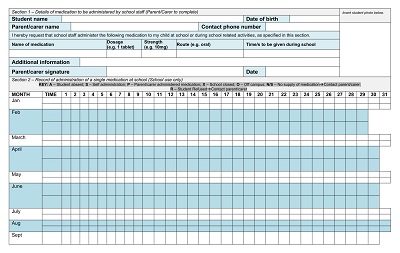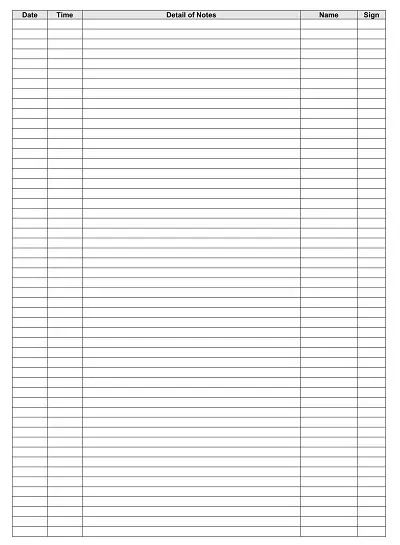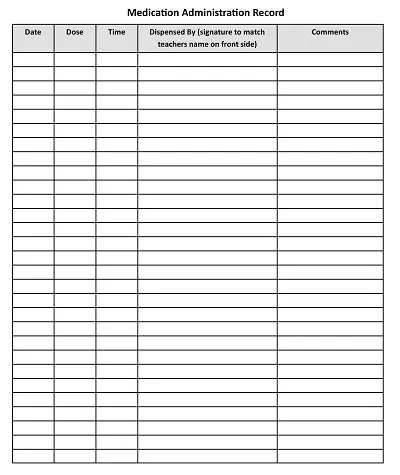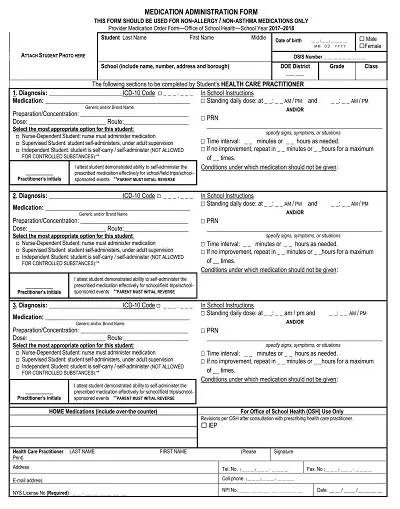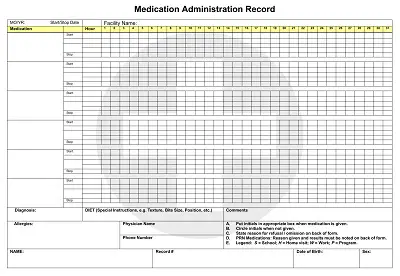38+ Free Printable Medication Administration Record Sheets – PDF, DOC
Medication Administration Record Sheet is an essential tool for healthcare workers who need to ensure accuracy and efficiency when providing medication to their patients. Having an easy-to-use, digitally interactive record sheet can streamline the process while giving healthcare staff peace of mind when it comes to managing difficult and complicated medication regimens.
Table of Contents
With easy-to-follow instructions and prompts, healthcare professionals can stay organized by keeping a comprehensive list of all the drugs their patient is taking, as well as tracking important information such as the dosage and duration. By having all of this pertinent information recorded in one comprehensive document, critical medical mistakes can be avoided that may otherwise put patient safety at risk.
Download Free Printable Medication Administration Record Sheets
What is a Medication Administration Record?
A medication administration record (MAR) provides a comprehensive record of medications that have been prescribed and administered to a patient. The MAR serves many purposes, including providing an exact history of the patient’s care and reducing the ambiguity of handwritten orders or verbal information from doctors.
Additionally, it can ensure that prescribed dosages are precise, that doctors consider possible adverse reactions before prescribing, and that medications do not interact negatively with one another. Furthermore, it allows for easier tracking of patient outcomes and better patient monitoring by providing an accurate record of medications given to them over time. In short, MAR is an invaluable tool in ensuring patient compliance with their treatment plans and improving their overall outcome.
Types of Medication Administration Records
Medication administration records (MARs) are essential for providing safe, effective, and accurate care for patients. MARs provide a detailed record of the patient’s medication history, which allows medical professionals to track changes in medications and use this information to make treatment decisions. Here are some different types of MARs and how they are used.
Electronic MARs (eMARs)
An electronic MAR, or eMAR, is an electronic version of a paper-based MAR that is stored on a computer. They allow healthcare providers to quickly access detailed records and enter new information accurately and efficiently. Electronic MARs also provide real-time data analysis so that medical professionals can easily monitor patient responses to medications. Additionally, electronic MARs help facilitate communication between healthcare providers as well as health IT systems so that all parties have access to up-to-date information about the patient.
Paper-Based MARs
Paper-based MARs are traditional records kept by hand on paper forms. While these types of records are still widely used in many healthcare settings, there is increasing pressure from healthcare organizations to move away from paper-based systems towards more efficient eMAR systems. Paper-based records can be difficult to update quickly and accurately when changes occur in the patient’s medication regimen or health status.
Computerized Provider Order Entry (CPOE) System
Computerized provider order entry (CPOE) systems are another type of electronic system designed specifically for ordering medications electronically instead of manually entering them into paper forms or electronic databases. CPOE systems allow medical professionals to quickly order medications online with fewer errors than manual methods and reduce potential drug interactions by alerting providers when orders may conflict with current medication regimens or underlying conditions. CPOE systems also help simplify billing processes by instantly transmitting orders directly to pharmacies and insurance companies while eliminating time-consuming paperwork associated with manual ordering processes.
Benefits of a Medication Administration Record
A Medication Administration Record can be a useful tool for medical professionals to stay organized and informed. Not only does this record provide an accurate account of the medications being taken by patients, but it also serves to prevent medication errors, and attempt to reduce the risk of adverse drug events. This record allows medical professionals to track the exact date, time, and content of each medication prescribed and helps them to easily compare dosages, strengths, and other details about all the medications a patient is taking at any given time.
MARs provides real-time access to complete patient information which may prove invaluable during urgent situations when a patient’s current condition must be rapidly assessed in order for them to receive timely care. For delivering quality care in an efficient manner, Medication Administration Records are essential components of modern healthcare systems.
Medication Administration Record Training and Education
Medication Administration Record (MAR) training and education are essential for healthcare staff in any healthcare setting. MARs detail a patient’s dose, instructions, the time the medication was taken, and any abnormalities associated with it, all of which are important for providing quality care at all times. The training required to correctly understand this process provides healthcare professionals with the skills to determine appropriate doses of medications and identify signs that may indicate adverse drug reactions or interactions.
Furthermore, effective MAR training includes interventions that staff can use when a medication issue arises and steps they should take to prevent similar issues from happening in the future. With these trained skillsets, healthcare personnel is able to make informed decisions that lead to safer, improved patient outcomes.
Medication Administration Record Audit and Review
Medication Administration Record (MAR) audit and review are an essential part of patient safety. These processes in the healthcare industry provide a structured way to examine and assess how medications are being prescribed and administered. By evaluating each prescription, its administration, and patient response, healthcare professionals can ensure that the medications that patients are taking are safe.
MAR audit and review could help decrease medication errors, meaning fewer avoidable injuries or illnesses due to medication mistakes. Even more importantly, it can safeguard patient health by promoting accurate prescribing, dosing, and monitoring of medications which will all result in improved quality of care and satisfaction among patients. With MAR audits and reviews in place, patients can be confident they are receiving the safest and most appropriate care possible.
Creating a Medication Administration Record Sheet for Your Facility
A Medication Administration Record (MAR) sheet is an important document that healthcare facilities must have in order to effectively track the administration of medications. It’s essential for patient safety and should be created with care and accuracy.
Gather the Necessary Information
The first step in creating a Medication Administration Record (MAR) sheet is to gather all the necessary information from your facility. This includes patient information, such as name and date of birth, as well as the type of medication being administered, the dosage amounts, the route of administration, and when it was administered. Additionally, make sure you have any special instructions that may apply to administering this medication.
Enter Patient Information
Once you have gathered all the necessary information, you can begin to enter it into your MAR sheet. Start by entering the patient’s name and date of birth on the top line of your form. Additionally, if you are using an electronic system such as an EHR (Electronic Health Record), make sure you include any relevant identifiers such as medical record numbers or insurance carrier codes.
Input Medication Information
After entering the patient information, move on to entering the medication details into your MAR sheet. Make sure you include all pertinent information regarding this medication including its name, dosage amount, route of administration (i.e., orally or intravenously), indication for use (the reason why it is being prescribed), and any special instructions for its administration. In some cases, you may also need to include additional information such as frequency or duration of use for certain medications.

